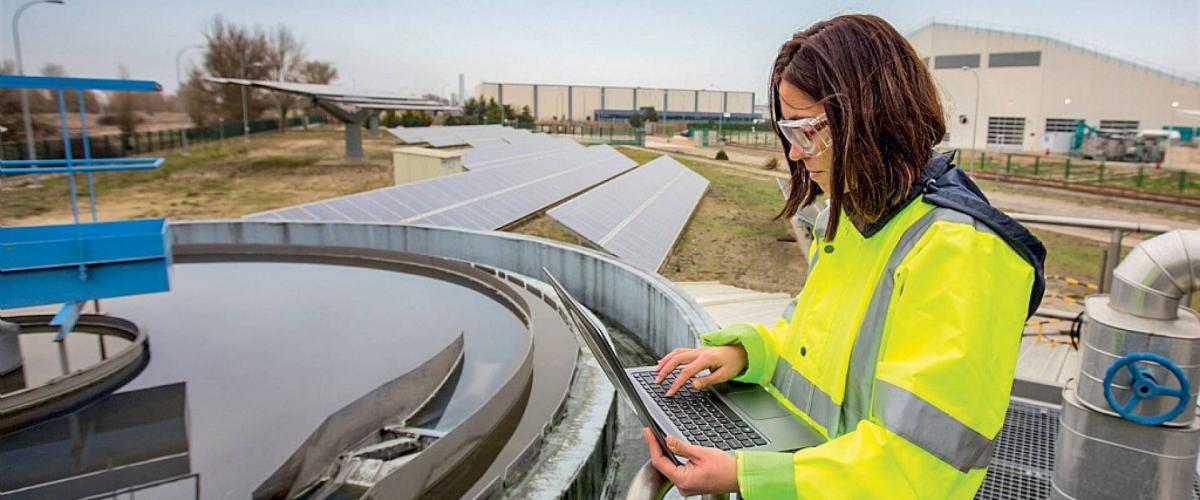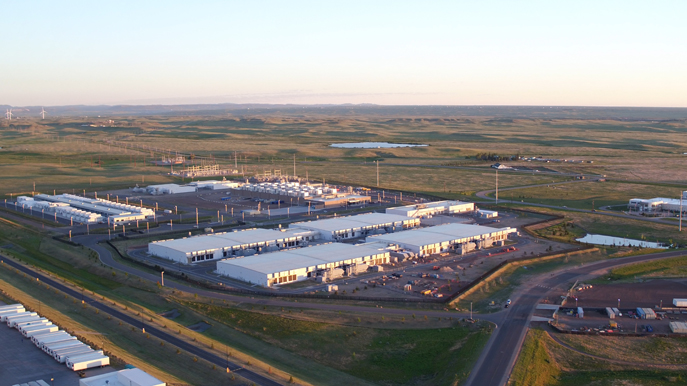Angeli Mehta reports on how L’Oréal, Microsoft and BASF are cutting water use in their own operations – and beyond
Industry accounts for almost 20% of global water withdrawals and consumption is growing steeply. An analysis published by CDP last year revealed that the number of companies reporting higher water withdrawals increased by almost 50% between 2015 and 2018, despite the fact that that there had been a near-doubling in the numbers setting targets to reduce water withdrawals.
“Corporate action is not reaching the pace and scale needed to truly address water insecurity,” CDP’s CEO Paul Simpson warned in his forward to the 2018 Treading Water report. “Our analysis shows that even as companies report greater risks year on year, freshwater withdrawals are increasing as they expand their production.”
L’Oréal's 'Waterloop' factories
One company bucking this trend is L’Oréal. The world’s largest cosmetics group has managed to cut its water consumption by a third over the past decade, despite increasing production.
L’Oréal’s environment director Jean-Michel Pille sums up the imperative: “We are totally linked with water. We are linked upstream when we source our raw material, our packaging material; we are linked with water when we produce and manufacture our product. Water is the first raw material for all our products worldwide.
“And when you think about the consumer, our products are certainly linked with the availability of water. No water – no shampooing or showering. So our ability to operate effectively and meet all the needs of our consumers depends on sustainable water access, management and conservation.”
The turning point came when the company introduced an internal waterscan tool 10 years ago, allowing it to monitor how much water is used in different processes.
The company homed in on wastewater as a route to minimise consumption, with its best-performing factories setting the standard for the others.
The company decided to push harder and see if it could recycle its wastewater to use in operations like cleaning tanks and producing steam. The answer lay in adopting technologies used to produce clean water for cities, and getting them to work on a far smaller scale.

The Waterloop concept has been tested and installed in four factories in Europe and Russia, making four different products. The definition of a Waterloop factory is that the only withdrawals of water are for human consumption and as a raw material in L’Oréal products.
The ambition is to have all 39 factories using the technology by 2030. Its priorities will be plants in high-stress watersheds: in Egypt, India, Israel and South Africa.
A fifth factory in Mexico City will be Waterloop by the end of the year. Here, says Pille, L‘Oréal will also upgrade its internal water management processes in recognition of the dire state of the city’s natural reserves. A framework for water stewardship also sees it working with the city’s government and other water users.
The French cosmetics company is also working with suppliers to encourage them to disclose their environmental impacts to CDP. The next step is to “ensure that they are able to monitor the water they use, the wastewater they discharge – everything we do for our own facilities,” says Pille. “And if there are opportunities in the same watershed, we will be able to co-build solutions – something we have already done with energy.”
L’Oréal is also willing to share its technology with its competitors, and has already talked to Proctor & Gamble and Unilever.
Microsoft aims for net-positive
Another A-lister in cutting its operational water use is Microsoft, which in September went a step further by making a commitment to replenish more water than it uses by 2030. Specifically, it says it will put back more water in stressed basins than its global consumption across all basins. This means focusing its efforts on 40 highly stressed basins where it operates. The company plans to invest in wetland restoration and removal of impermeable surfaces like asphalt.
In a recent blog, Brian Janous, general manager for energy and sustainability, explained that for more than six months of the year, its Arizona data centres will use no water for cooling. Instead, it will use outside air (instead of water) for cooling when temperatures are below 85 degrees F (29 C) – so-called adiabatic cooling.

At higher temperatures, it will use evaporative cooling, which requires 90% less water than conventional systems such as cooling towers. More savings – expected to reach 350 million litres a year – will come from investment in solar energy as part of the company’s greenhouse gas emissions reduction target.
Separately, Microsoft will harness the power of data and AI to enable other companies and governments to monitor water consumption and availability, and to predict threats to supply.
BASF expands definition of 'water stress'
Although Europe doesn’t experience the same level of water stress as parts of the US, no geography is immune, as European manufacturing companies discovered when prolonged drought a couple of years ago put the brakes on shipping on one of the continent’s most important navigation routes, the river Rhine.
In addition to the ecological damage, the German economy took a hit, with companies having to reroute materials or unable to draw all the water they needed for cooling. Steelmaker ThyssenKrupp and chemicals groups Evonik Industries and BASF were all forced to scale back their output.
In its 2019 management report, BASF said it could “no longer rule out the effects of extreme low-water situations caused by climate change” at its major integrated manufacturing site at Ludwigshafen.

The company, one of 31 companies on CDP’s A list for water risk, installed an early warning system for low water levels and chartered more ships that can cope with shallower waters; as well as installing more capacity to recycle cooling water several times before discharging it back into the Rhine.
BASF, which has a 2030 target of introducing sustainable water management at all production sites in water-stressed areas and its most resource-efficient Verbund sites, last year also brought in new rules for its global operations, expanding its definition of “water-stress” to areas in which more than 40% of available water is used by industry, household and agriculture, compared with the previous definition of more than 60% of available water.
Angeli Mehta is a former BBC current affairs producer, with a research PhD. She now writes about science, and has a particular interest in the
environment and sustainability. @AngeliMehta.
This article is part of our in-depth Water Risk briefing. See also:
Running dry: Competing for water on a thirsty planet
Connecting the drops in the battle against climate change
Finance firms come together in bid to overcome barriers to banking on biodiversity
Mining firms ‘failing to get to grips with worsening water security crisis’
Scorched earth strategies: how Cargill, Unilever and Diageo are cutting their water footprints
From 500 litres of water a day to 50: P&G heads up a partnership to stave off next Day Zero
The Gulf companies innovating to reduce dependence on desalination
‘It’s time for fashion to turn its focus from the catwalk to cutting water pollution’
L’Oréal BASF Microsoft CDP water consumption water security Waterloop


